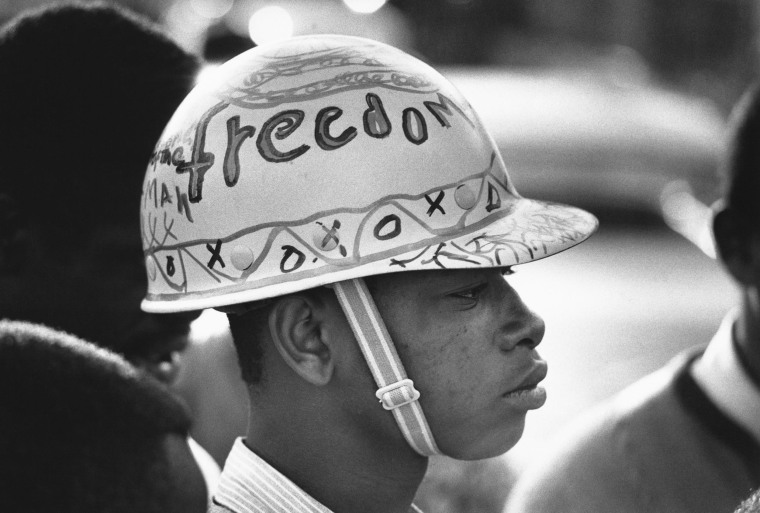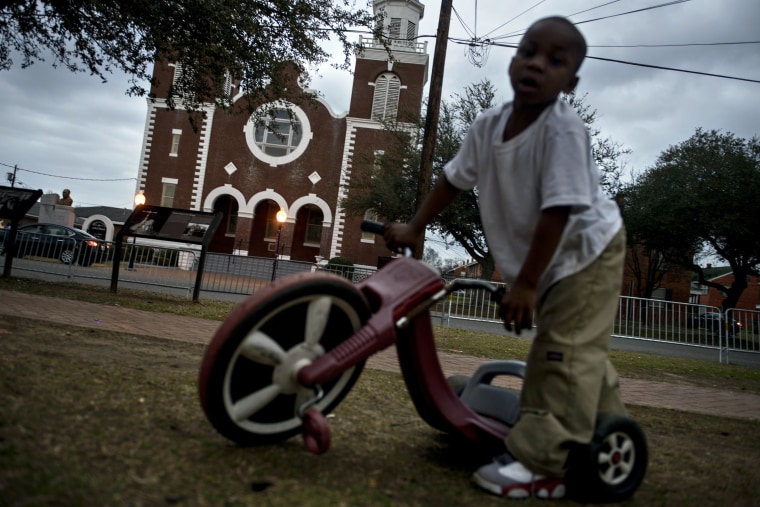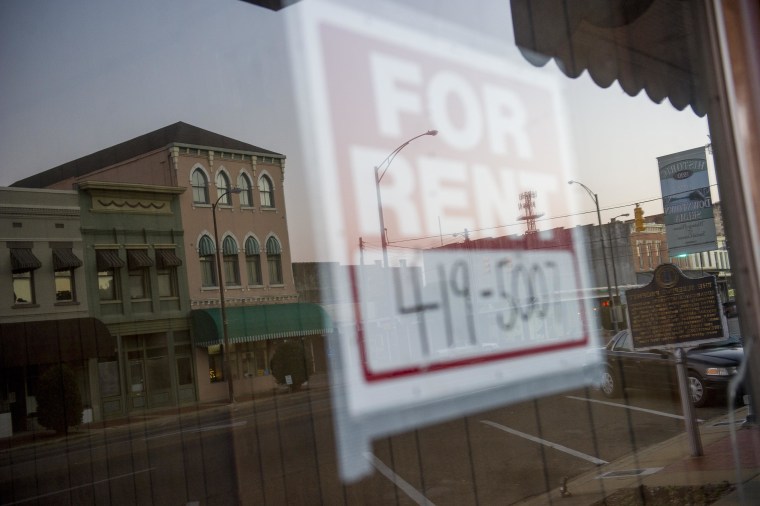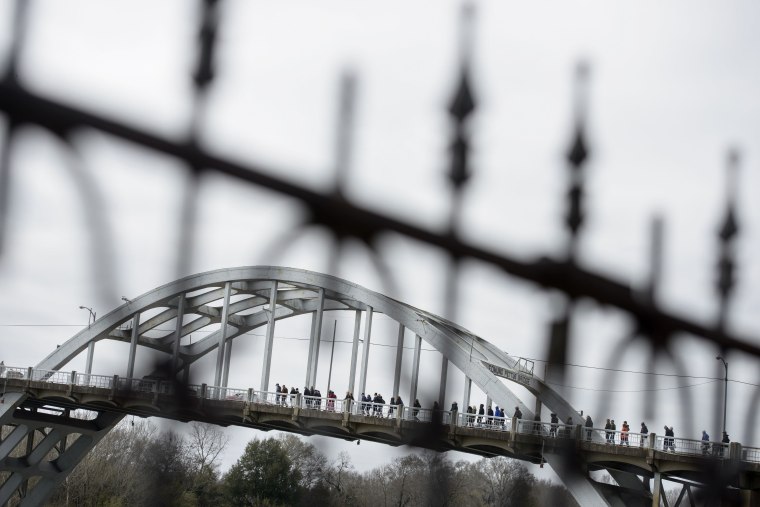When thousands gather this weekend in Selma, Alabama, to mark the 50th anniversary of “Bloody Sunday,” some will likely conclude that the town that changed America has not seemed to make much progress of its own.
The majority of registered voters in Selma are now black — along with most of the city, whites having fled in the decades since their African-American neighbors gained access to the ballot box. More than half the businesses in Selma are black-owned.
But Selma is a poor city in one of the poorest states in the country. The typical resident earns about half the state’s median income of $43,000, and over 40 percent of its citizens live below the poverty line, more than twice the state average. According to the most recent data, 10 percent of Selma residents are unemployed — one of the highest rates in Alabama — compared to six percent statewide.
Some say such statistics suggest that the country has spent more time on symbolism and honoring the past than focusing on the city’s present-day progress.
“The people who received less benefit from the movement are the ones who did the most,” said Andrew Young, a lieutenant of Martin Luther King Jr.’s who was among those marching on March 4, 1965. “That’s always bothered me.”
"The farmers who let us stay in their homes, who bonded us out of jail, are old guys now. They still own land but they can’t make a living on the land."
But others who live and work in Selma say the city is making progress — though it is held to a higher standard because of its transformative history.
“This community’s not doomed,” said Selma-Dallas County Economic Development Authority Executive Director Wayne Vardaman, a lifelong resident of the county. “Through [the bridge re-enactment] that’s the perception. People say, ‘We’ve gotta save Selma! It’s falling off a cliff!’ Do we need some help? Sure. But it’s not dying. It’s changed.”
Selma was the site of one of America’s greatest horrors and greatest triumphs. Five decades ago, the plight of thousands of disenfranchised blacks drew the Rev. Martin Luther King and the Southern Christian Leadership Conference to this town to wage the last great battle of the Civil Rights Movement.
King’s choice to use Selma to spotlight the issue of voter disenfranchisement was strategic: Though blacks represented more than half of Selma’s population, only one percent of them were registered to vote. Not only did the city exemplify the worst of Jim Crow, its sheriff, Jim Clark, was an ideal adversary in the mold of Birmingham’s Bull Connor. A showdown between the two guaranteed national media attention.
“That was the point, to try to expose the worst of the situation,” said Rutgers University historian Steven Lawson, who has authored several books on civil and voting rights.
Preventing blacks from voting was a pillar of segregation that was viciously preserved by the state’s white power structure. Without Selma, it may never have been toppled.
This weekend, a grateful nation will mark the 50th anniversary of “Bloody Sunday.” Thousands, including President Barack Obama, members of Congress, activists and others will recall the brutal attack on peaceful protesters attempting to march across the Edmund Pettus Bridge at Selma’s edge, en route to Montgomery that became the catalyst for the passage of the Voting Rights Act of 1965.

In addition to the anniversary, Selma has received renewed attention in the months since the release of the critically-acclaimed motion picture named for the city and based on the events of “Bloody Sunday.” In January, the stars of the movie — including Oprah Winfrey, David Oyelowo, and director Ana DuVernay — staged a re-enactment on the Edmund Pettus Bridge to commemorate the Martin Luther King Jr. holiday.
But for those who live and work in Selma, the city and its history is more than that, said Vardaman.
“People wanna hold us to [1965],” Vardaman said. “We have moved forward. You’ve got most of the governmental positions held by African-Americans, which is a good thing. We’ve made progress, but nobody talks about that.”
Indeed, while some point to today as a moment when local and federal governments are shortening early voting and requiring voters to show identification at the polls — actions some say are dismantling the gains of those who marched from Selma to Montgomery — the political landscape in Selma is vastly different than that of a half century ago. The voting population in 1960 in Dallas County was 64 percent white; today it is 69 percent black.
Selma elected its first black mayor, James Perkins, in 2000. After two terms, he was succeeded by the city’s first black council president, George Evans. Democratic Congresswoman Terri Sewell, who represents Selma, is the first black woman ever to serve in the Alabama congressional delegation.

The events of Selma fast-tracked access to the franchise for Southern blacks who had been viciously denied the right to vote since the turn of the 20th century. Such swift action on a seemingly impossible problem was seen as extraordinary — and so, too, is the city most associated with this momentous change.
But now as then, Selma should be looked at as an example, not an exception, said Nisa Miranda, director of The University of Alabama Center for Economic Development. Miranda said that in the 15 years she has worked with Selma, she has seen change — but incremental, not monumental.
“Selma is seen as special and unique, as having charted some kind of a path,” said Miranda, whose work focuses on sustainable economic growth in rural communities like Selma. “It’s an expectation that [Selma] should push itself to do so much more because of its renown.”
Deborah Montgomery came to Selma from Minnesota as a 19-year-old college student to join the march from Selma to Montgomery and was among the hundreds attacked on the Edmund Pettus Bridge. This weekend, she returns to join those commemorating that day, but is disheartened by what she sees as the town’s lack of progress.
“Let me tell you something: Nothing’s changed,” Montgomery said. “I mean, the buildings are still the same. I mean, they’re older and everything, but it’s just so much like it was then. It’s not like the city has redeveloped. It’s still Selma.”

Vardaman acknowledges the high unemployment, which he attributed in part to the loss of white-collar jobs and closings of plants and factories, leaving a high number of people without the skills to transition into other types of work. But he also pointed to industries like aviation, timber and automobile suppliers that have come to the area in recent years as bright spots.
Vardaman said that things could always be better, but that the county and Selma are moving forward. “Selma is a great place to live. There are young people moving back. There's the outdoors, natural resources, it’s a small community. I'm 66 years old, I've lived here all my life. You couldn’t pry me out of here.”
The closing in 1978 of Craig Field, a former Air Force base in Selma, was a huge blow to the city’s economy. The loss of jobs that accompanied the closing also meant there were far fewer people to rent apartments, shop, and pay taxes.
Vardaman said plans are in the works for redeveloping the former base.
“We are negotiating on several projects,” he said cautiously. “You can’t say you’re going to get them, but we’re in the competition. If we get those it’d be a gamechanger for this area.”
While he declined to elaborate, he said the projects could bring “hundreds of jobs” to the area.

Aside from the annual re-enactment of Selma, tourism plays a huge role in the county’s economy. Ashley Mason of the Selma-Dallas County Tourism Department said the estimated economic impact of tourism on the area in 2013 was $67 million.
Though figures for last year are not yet available, 2014 was also active. The filming of “Selma” drew a lot of attention and dollars to the city. And in addition to this year’s milestone anniversary of “Bloody Sunday,” Selma is also preparing next month to mark another watershed moment: the 150th anniversary of the Battle of Selma, one of the last stands of the Confederacy during the Civil War.
On Monday, the cameras will again depart — capping the annual weekend ritual known as the Bridge Crossing Jubilee — and Selma will return to being just another small town in rural America, trying to attract residents, jobs and revenue.
“If you take out what happened here… it probably would not be as newsworthy," Verdaman said. "We are under a magnifying glass every year. That’s tough. It certainly doesn't make my job any easier. I’m trying to sell the community.”
